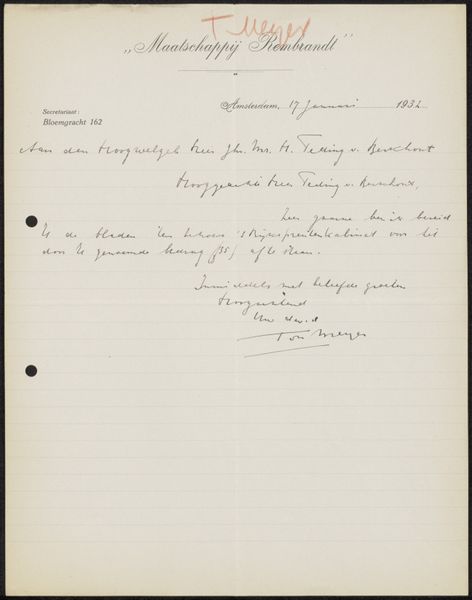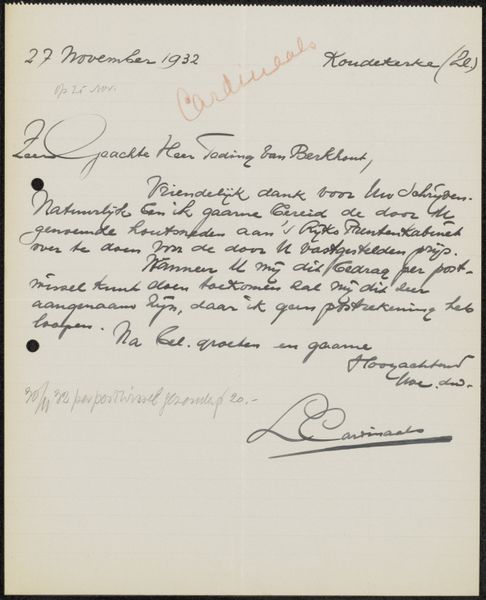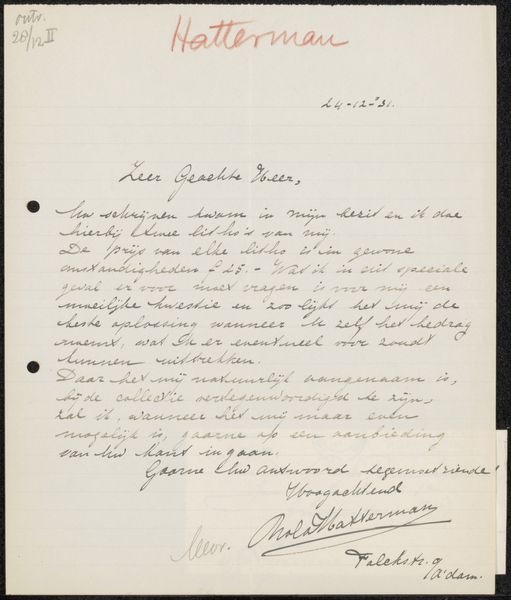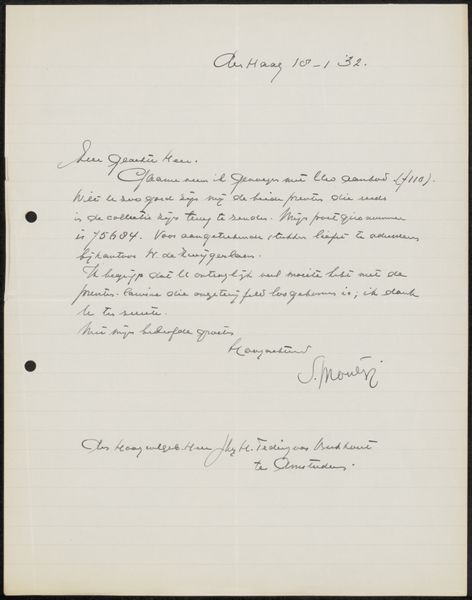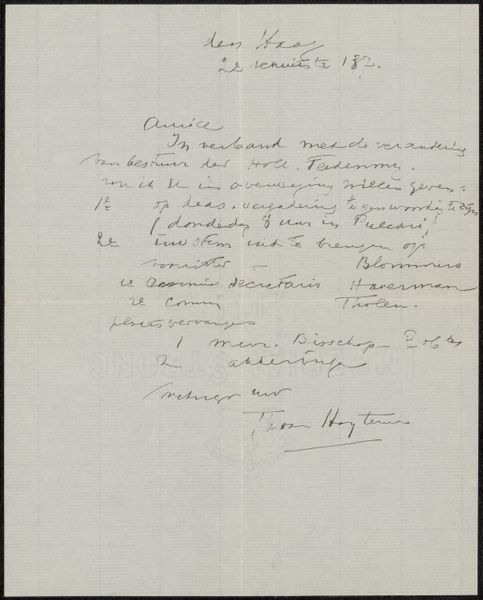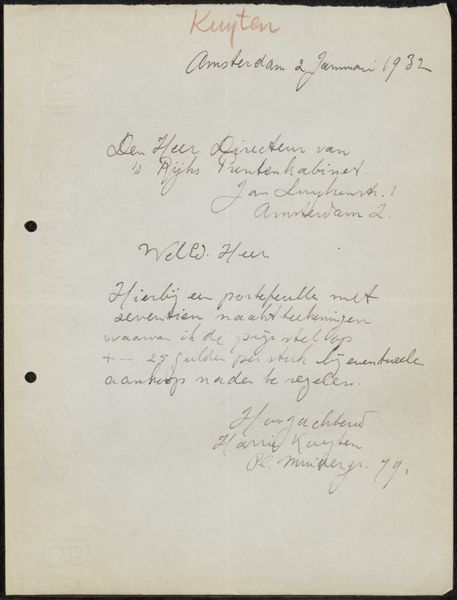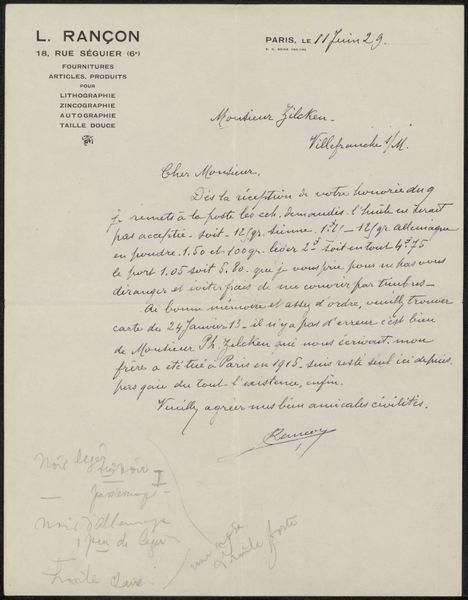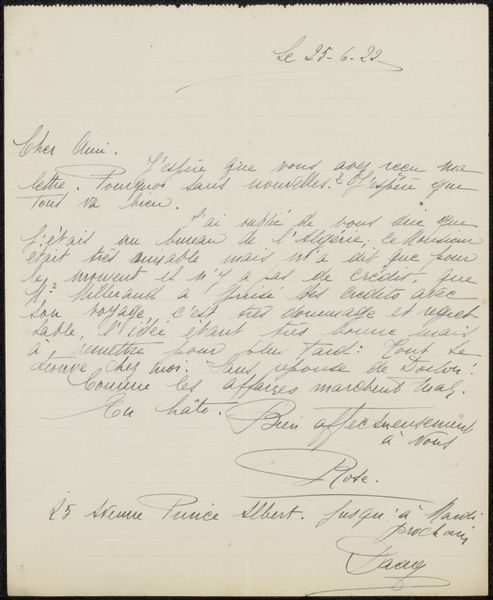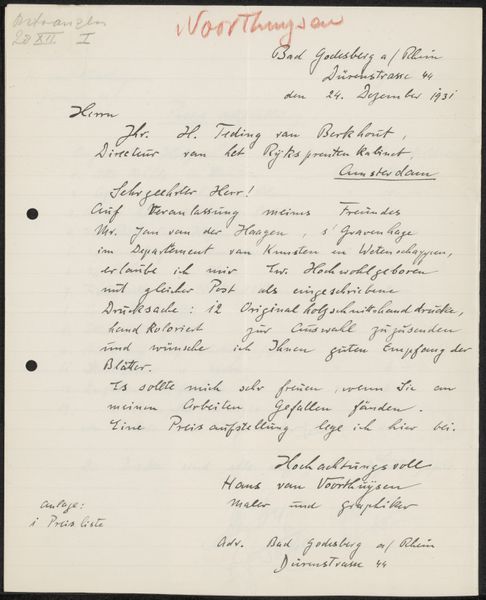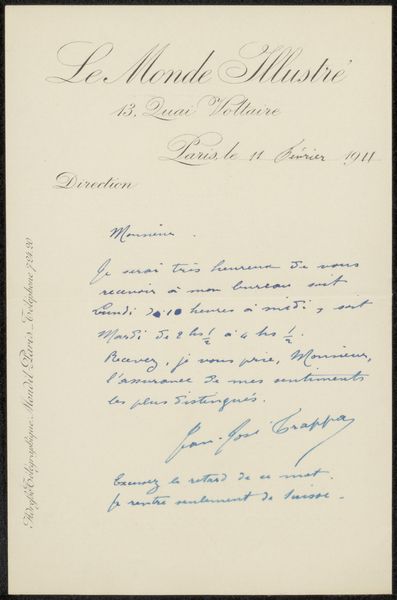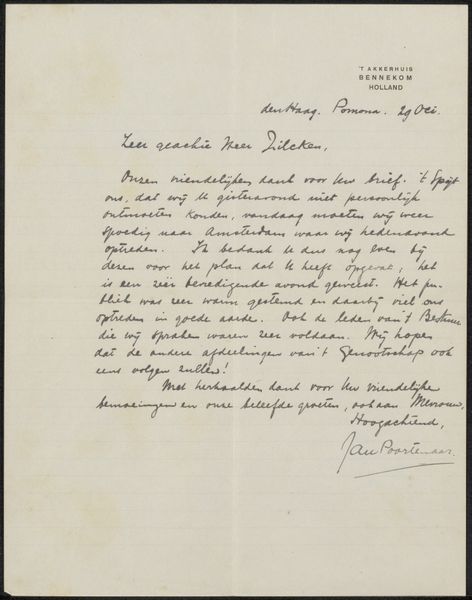
drawing, paper, ink
#
drawing
#
comic strip sketch
#
hand-lettering
#
hand drawn type
#
hand lettering
#
paper
#
personal sketchbook
#
ink
#
hand-drawn typeface
#
ink drawing experimentation
#
ink colored
#
sketchbook drawing
#
sketchbook art
Copyright: Rijks Museum: Open Domain
Curator: This is an ink drawing on paper by Herman Heijenbrock, believed to be from around 1931. The piece, titled "Brief aan jonkheer Hendrik Teding van Berkhout (1879-1969)," which translates to “Letter to Esquire Hendrik Teding van Berkhout”, feels rather intimate. What are your initial impressions? Editor: Well, first, there’s an immediate sense of intimacy, almost voyeuristic – as if we're looking over someone’s shoulder at a private correspondence. The handwriting, the slight imperfections of the ink, all contribute to that feeling of immediacy. Curator: Indeed, the script itself becomes a fascinating artifact. The flourishing signature contrasts the functional, almost accounting-like nature of the list within. It is Heijenbrock managing the affairs of the moment. And perhaps more deeply, something about his place and status at that time. Editor: I’m interested in how this ties into the broader social and cultural context. Letters were not just utilitarian, but social texts, shaping relationships and identities. Who was this "jonkheer," and what did their exchange mean within the socio-economic landscape of the time? Curator: Hendrik Teding van Berkhout was most likely a contact of Heijenbrock; this “letter” is probably the back of an envelope, which gives us some valuable insight. There are logistical notations as well. These glimpses into quotidian practicalities open to something profound about memory and correspondence in pre-digital ages. Editor: I wonder about the reception. How would this letter have been perceived by its recipient? Was Heijenbrock a respected figure whose missives carried weight, or was there an imbalance of power in their relationship reflected by the formalities, or the lack thereof, in the handwriting itself? Curator: The physicality of this "Brief" grants it continued significance. These material dimensions provide connections through time; we receive glimpses into Heijenbrock’s thoughts while inviting conversations around heritage itself, too. Editor: It serves as a powerful reminder of art's engagement with history, culture, and psychology. The act of writing, the choice of words, and the very texture of the document – they all construct a multilayered message resonant even now.
Comments
No comments
Be the first to comment and join the conversation on the ultimate creative platform.
